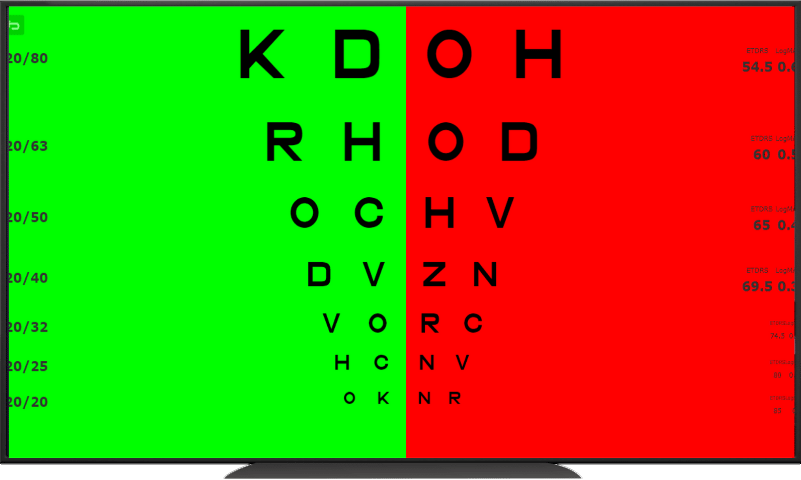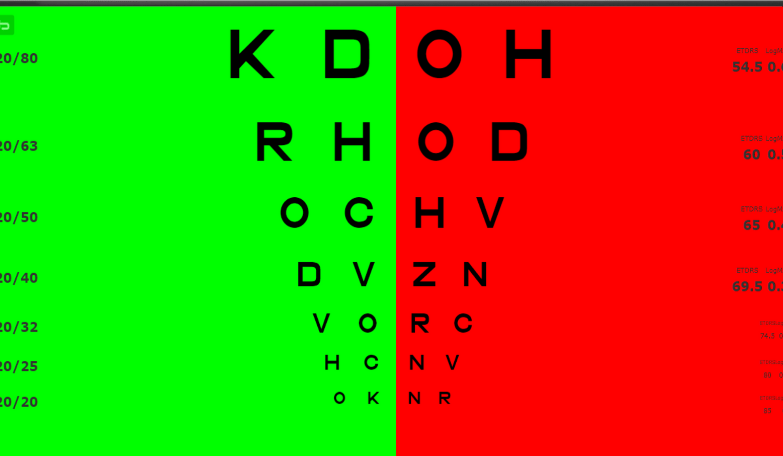A red-green duochromatic or bichromatic test is a commonly used test to refine the final sphere in refraction, which makes use of the longitudinal chromatic aberration of the eye. Chromatic aberration, the basis of the test, occurs because different wavelengths of light are bent to a different extent. The longer wavelength (red) is refracted less than the shorter (green). If the letters on the red side stand out more, add minus power; if the letters on the green side stand out more, add plus power. Neutrality is reached when the letters on both backgrounds appear equally distinct.

Myopia and hyperopia are the most common refractive errors. The Duochrome test is used to determine which of these two conditions is present. The Duochrome test measures the amount of red light reflected from a patient’s eye and the amount of green light reflected from the same eye.
The red-to-green ratio indicates whether the patient has myopia or hyperopia, since it indicates how much more focused light enters an eye with myopia than an eye with hyperopia. This can be used to refine prescription for glasses or contact lenses, depending on whether a person has been diagnosed with myopia or hyperopia
How to perform de Duochrome test?
To perform the Duochrome test you need to set the Bichromatic test to ON, as seen in the image below. You just need to hold the OK button to show the options. In future updated you will be able to ourn on and off by pressing the key “0” in your remote control. On windows you can turn on and off by pressing the button “B”.

Once Duchrome options is on, you can perform the Duochrome test. Touch up and down to change the optotypes sizes.

Interpreting the results
The patient is asked to compare the clarity of the letters on the green and the red side. If the letters of the green side are clearer +0.25 D sphere is added and if the letters on the red side are clearer -0.25 D sphere is added. With optimal spherical correction, the letters on the red and green halves of the chart appear equally clear.
Because this test is based on chromatic aberration and not on color discrimination, it is used even with people having color vision deficiency. Also, the duochrome test is not used with patients whose visual acuity is worse than 20/30 (6/9), because the 0.50 D difference between the two sides is too small to distinguish.
The eye with overactive accommodation may still require too much minus sphere in order to balance the red and green. Cycloplegia may be necessary.
Conclusion
EyeCharts and its resources allow not only the measurement of visual acuity but also refine the refraction and improve the experience of the professionals with very important resources to guarantee the quality in the prescription




